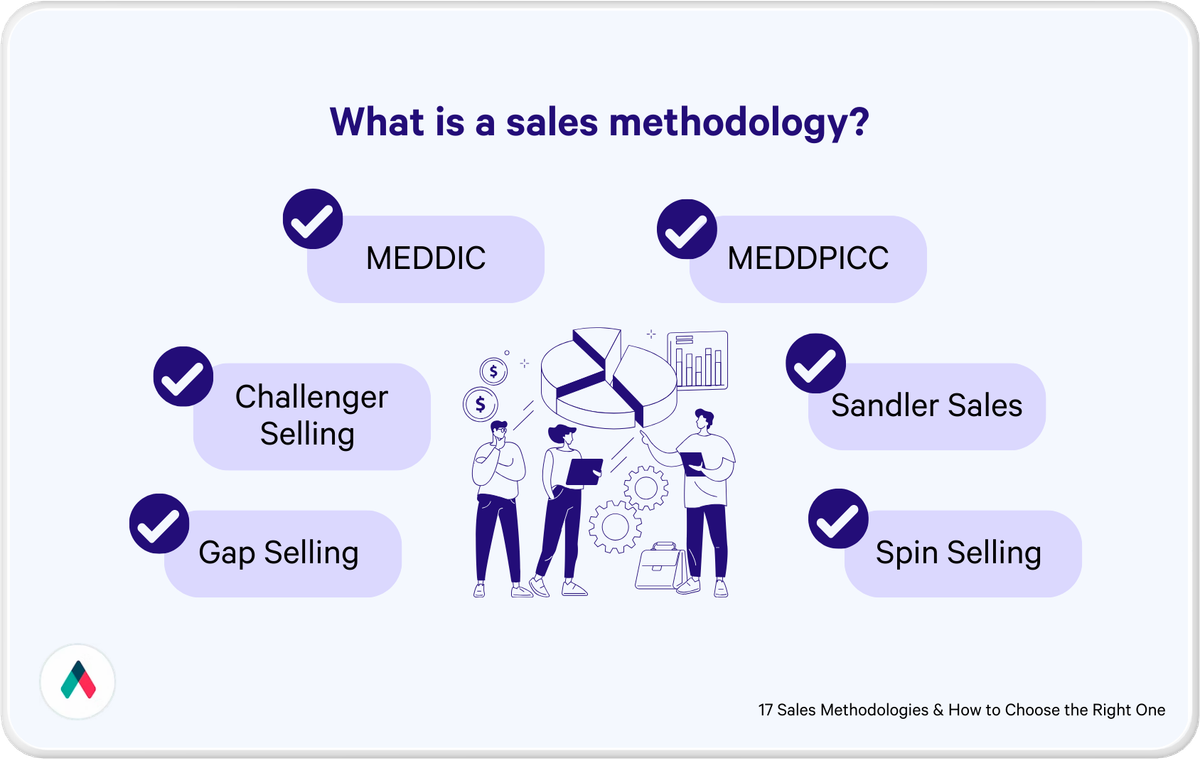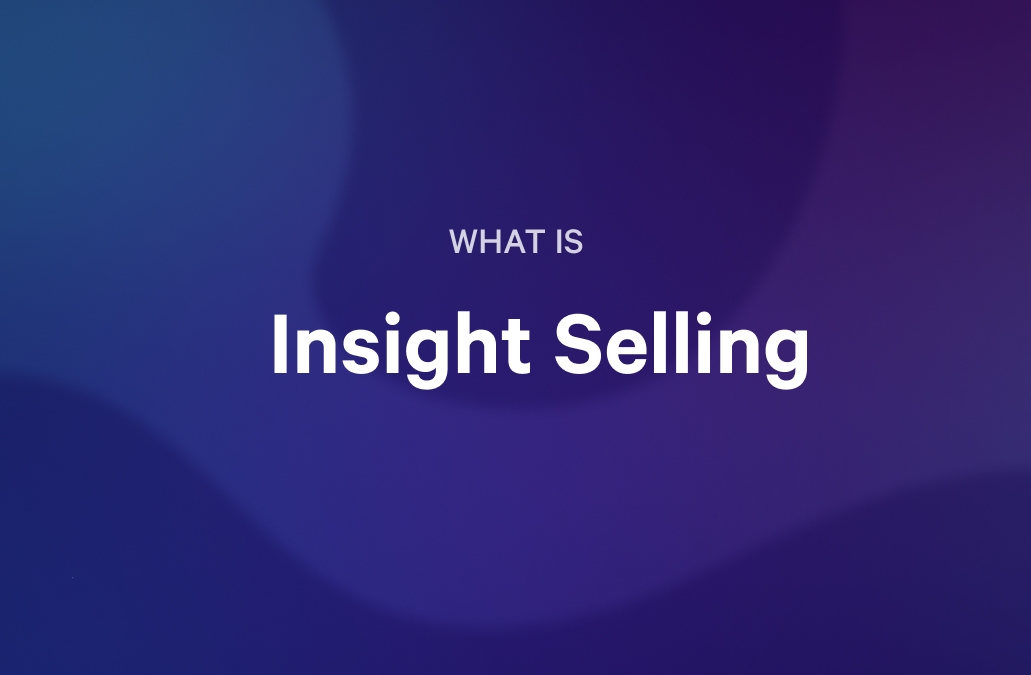When it comes to mastering the art of selling, being able to ask good questions is a foundational skill that many experienced sellers struggle with. How do you ensure that your prospect feels valued and not like they're being interrogated? Can you ensure that you've asked enough of the right questions to write a compelling, correct proposal? This is where the MEDDPICC sales framework comes in.
This methodology can give you a structure for what topics to cover in the discovery process and some good questions to consider asking. By working through the letters in the acronym, you will get to know your prospect, confirm that your solution is a good fit, and learn what you need to know to write a proposal that will win them over every time.
Whether you're a seasoned sales veteran seeking to refine your approach or a novice eager to grasp the fundamentals, this article will equip you with the knowledge and strategies needed to leverage MEDDPICC questions to drive unparalleled sales success.
Key takeaways
- MEDDPICC sales framework provides a structured approach to understand prospects and write compelling proposals.
- Identifying the economic buyer and understanding their needs is crucial in the sales process.
- Understanding the decision criteria and process helps in qualifying the opportunity and strategizing the proposal.
- Knowledge of the paper process can streamline contract management and prevent unnecessary time on reviews.
- Identifying and solving the true pain point of the prospect is a core part of selling.
More of a visual learner? Check out our video on the most effective discovery call questions and how to deliver them:
Metrics
1. How do you define and report on success?
This question helps you understand how your prospect will measure if something is a success or failure. What data do they use and how do they communicate about what the data is telling them?
2. What metrics show you that there is room for improvement? Can you talk about a time you used data to make a change in your business process?
This question will also help you understand how data-driven or data-savvy your prospect and the organization as a whole are. There is a difference between a prospect with robust data or detailed OKRs and a client who seems to 'wing it' or rely less on having available data to drive decisions.
3. How do you empower your teams to measure their successes?
When qualifying your deal, it's important to understand how your prospect is empowering their team to measure their own successes so that you can craft a proposal with messaging that resonates.
Economic Buyer
4. Who makes the final decision on this purchase?
When it comes to identifying key stakeholders, this step should be part of any sales qualification methodology, but MEDDPICC gets right to the point and asks sales reps or account executives to seek out the key stakeholder quickly. As a refresher, the economic buyer is the one and only person with the purchasing power. They can say no when everyone else says yes, and they can say yes, when everyone else says no.
5. Will I be able to meet with them as part of this process?
This is about getting directly to the source. If you don't know who the economic buyer is, or you can't meet with them as part of the process, this may be an area of concern.
6. Is there anything the economic buyer might not know about the needs your team has, and how can we communicate that best?
When you ask this question (of your champion or other members of the buying committee), what you're getting at is how to address the needs of the users. For example, if you sell accounting software, your economic buyer might be the CFO - who potentially has different use cases and pain points than your boots-on-the-ground accountants within the organization.
Decision Criteria
7. Can you share your decision criteria?
A hallmark of both the MEDDIC and MEDDPIC sales process is understanding the decision criteria. Understanding how the organization will make its decision can help to qualify the opportunity further. What is most important to them and what will they look at?
8. Are there additional intangible factors that might help you make a decision?
Getting a complete picture of what is important to your prospect early can help you overcome objections - this might include intangibles like a clean and modern user interface or an intuitive workflow.
9. Are the decision criteria weighted, and can you share which are most important?
Like the previous question, this question speaks to priorities. Understanding what is most important can help ensure your proposal and collateral are focused on the right thing. Knowing if certain features, price, or onboarding experiences are most important will help you make better decisions throughout the sales process.
Decision Process
10. What is your decision process like?
Now that you know what information will go into your prospect's decision, you want to understand how the decision will be made. Will you need to submit a proposal, respond to an RFP, or give a live presentation? Make sure you understand all the steps in the process and how long they will take.
11. How many people are involved in the decision-making process, and can I communicate with anyone on the team during the process?
Like many other methodologies, the MEDDPICC sales process guides you to learn everything you can about the buying committee, and this question packs a one-two punch. It will help you get a full list of the buying committee and understand if you're able to communicate with any or all of them during the process. In some more formal RFP processes, communicating with members of the committee outside of the formal process is either prohibited or at least looked down upon. Gaining clarity around this topic before the process begins will help you strategize best and sail through the process.
12. What is the timeline associated with your decision process and onboarding?
Understanding who will look at what as part of the process is important. Knowing when is equally important. Knowing how long the process will last and if you're successful when onboarding would need to begin can help you with forecasting and staffing plans for the future.
Paper Process
13. How do you manage your paper process? Are legal or procurement professionals involved?
The Paper Process is one of the elements that led to the expansion from MEDDIC to MEDDPICC and speaks to how contracts are managed. Understanding who is involved in the process can help you engage the right people at the right time and prevent you from spending unnecessary time on reviews and red lines. If you know what needs to be in the contract from the start, the process will be that much smoother.
14. If we need to adjust the pricing or terms and conditions, how much lead time do you need for document reviews?
Another question to keep you in proactive mode vs. reacting. The more you know about these processes, the easier it is to schedule things in advance so they go more smoothly.
15. If your business grows or downsizes and you need to adjust your contract with us, what will that process look like?
The only constant in business is change. Companies may grow, downsize, or be part of a merger, and these can all impact your paper process. Asking some questions up front can help you be more prepared for anything that comes up.
Identify Pain
16. What is the biggest challenge with [insert core business process or function]?
Finding (and being able to solve) the true pain point is a core part of selling, especially today when there are so many options on the market for most things. Confirming you have correctly identified the pain point is a good first step.
17. How have you tried to resolve this challenge in the past?
Asking this question will help you get some historical knowledge so you aren't simply suggesting a solution that hasn't worked in the past. If you are going to propose a solution your prospect has already tried, make sure you address what and how it will be different this time around.
18. How long have you been facing this challenge, and has it evolved over time?
The longer your prospect has been dealing with an issue or challenge, the more of a priority it might be to address it. This question can help you understand how big the challenge is.
19. In addition to your department or business unit, who else in the organization is impacted by this challenge?
Like the question above, this question can help you understand how widespread the issue is. Does it only impact your prospect and their team or is this something that goes broader or even company (or industry) wide?
Champion
20. Can you help me understand X?
This is a question designed to help you test to see if you have found a champion. Getting inside info including detailed explanations from someone is a good indication that you have.
21. Have you heard any water cooler or pre-meeting chatter about our deal, and can you share any of what is being discussed informally?
Another good indication you have an internal champion is that they share internal, off-the-record information with you. Use anything they're able to share to help you craft a proposal that addresses the buying committee's needs and overcomes their objections proactively.
22. Can you arrange a meeting with your economic buyer and help me prepare?
If you have a true champion, they will be able to help you with this (and if they can't, you can use that information accordingly).
Competition
23. Are you considering anyone else for [product or service] at this time?
The answer to this question will tell you what you need to know about who you're competing against and how to position yourself.
24. Can you tell me who else you're meeting with?
This is another way you can ask about competition - you might choose this way if there are specific teams or reps you come up against consistently.
25. Is there anything you especially liked or disliked about [competitor or competitors]?
Here's a good question to help with your positioning. Asking for specific details that your prospect likes or dislikes about similar products or services can help you focus and highlight (or diminish) those things in your proposal.
Read next: Command of the Message Methodology
Using MEDDPICC to understand your prospect better
These questions are designed to help you better understand your prospect and the situation you're in.
If your solution's features and benefits meet your prospect's needs, and you have good information about the people, processes, and competition, you have put yourself in a good position to win.
If you need help creating collateral or a proposal that speaks directly to your prospects, Qwilr is here to help. Grab one of our easy-to-customize proposal templates and make it your own in minutes. To see it in action, book a demo or try it for yourself.
About the author

Marissa Taffer|Founder & President of M. Taffer Consulting
Marissa Taffer is the Founder & President of M. Taffer Consulting. She brings over 15 years of sales and marketing experience across various industries to a broad range of clients.
Frequently asked questions
The MEDDPICC sales framework is a methodology that provides a structure for the discovery process in sales. It helps in understanding the prospect, confirming if your solution is a good fit, and gathering information to write a winning proposal.
The 'Metrics' part involves understanding how your prospect defines and reports success, how they use data for improvement, and how they empower their teams to measure their successes.
The 'Economic Buyer' is the key stakeholder who has the final say on the purchase. They have the power to approve or reject the purchase, regardless of others' opinions.
The 'Decision Criteria' refers to understanding how the organization will make its decision. It involves knowing what is most important to them and what factors they will consider.
The 'Paper Process' refers to how contracts are managed. It involves understanding who is involved in the process and how to engage the right people at the right time.



